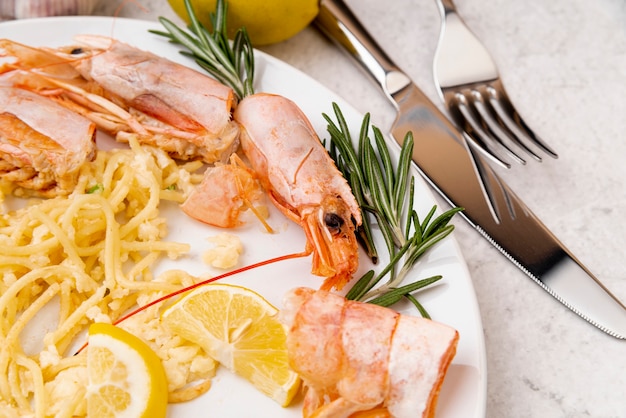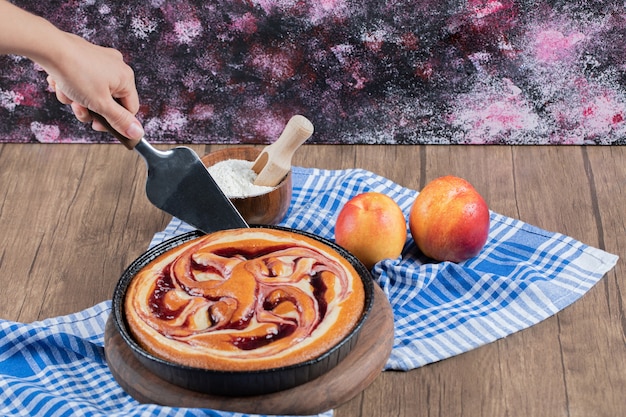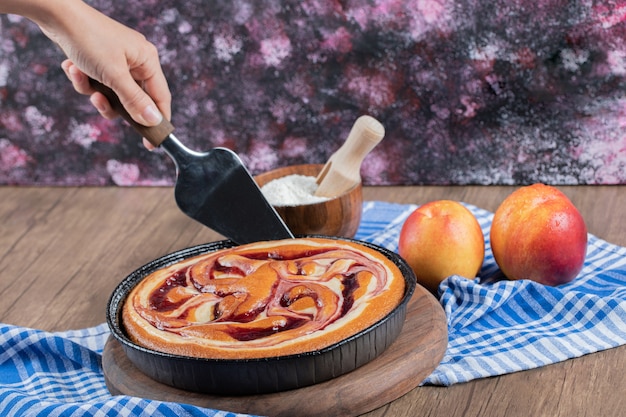Part 1: Choosing Your Crab Legs: A Journey Through Varieties

1.1. The Big Three: Snow Crab, King Crab, and Dungeness Crab
Think of these three as the superstars of the crab leg world:- Snow Crab: The classic choice for many, and for good reason. Snow crab has a delicate, sweet flavor and a tender, flaky texture that just melts in your mouth. It’s usually sold in clusters, which are the legs and claws of a single crab. You’ll often see them referred to as "snow crab legs" or "snow crab clusters".
- King Crab: The king of the crab world, literally! It’s known for its impressive size – you’ll find legs that are almost a foot long! - and bold, slightly briny flavor. The meat is also quite dense, making it satisfyingly substantial.
- Dungeness Crab: This crab is a favorite on the West Coast of the US. It has a sweeter, more buttery flavor than snow crab, and the meat is firm and juicy. It’s a bit smaller than king crab, but still packs a powerful flavor punch.
1.2. Beyond the Big Three: Other Delectable Options
While those three are popular, there are other amazing types of crab legs out there waiting to be discovered:- Blue Crab: These are a staple on the East Coast of the US and have a distinctly sweet, slightly salty flavour. They’re often served steamed and are known for their delicate, almost translucent meat.
- Stone Crab: A delicacy from Florida, stone crabs are known for their large, chunky claws. They have a sweet, slightly buttery flavour. They're typically served with a dipping sauce and are usually sold in pairs.
- Spider Crab: Don't let the name fool you, these crab legs are delicate and sweet. Their long, thin legs are perfect for dipping in sauces. They’re often called “spiny spider crab” because of their long, spiky legs.
Part 2: The Cooking Methods: Unleashing Flavor and Texture

2.1. Steaming: The Gentle Touch for Delicate Flavors
Steaming is my personal favorite for crab legs. It's a gentle cooking method that preserves the delicate flavours and moistness of the meat, ensuring a truly exquisite eating experience.- Equipment: You'll need a large pot with a steamer basket or a dedicated steamer.
- Process: Fill the pot with about an inch of water, add seasonings (I love a mix of bay leaves, peppercorns, and lemon slices), and bring to a boil. Place the crab legs in the steamer basket, cover the pot, and steam until the meat is cooked through. Don’t overcrowd the steamer, you want the steam to circulate evenly.
2.2. Boiling: The Classic Approach for Simple and Quick Cooking
Boiling is a tried-and-true method for cooking crab legs, and it's a quick and easy way to get a delicious meal on the table.- Equipment: You'll need a large pot with enough room for the crab legs to cook evenly.
- Process: Fill the pot with water, add seasonings (salt, pepper, old bay seasoning are all great choices), and bring to a boil. Gently lower the crab legs into the boiling water and cook until done. Make sure the water is boiling before you add the crab legs, so they cook evenly.
2.3. Grilling: A Smoky Embrace for Bold Flavor
Grilling adds a smoky flavour to crab legs, making for a truly satisfying experience. It’s a great option for outdoor gatherings or when you want a bit of a bolder flavor.- Equipment: You'll need a grill, preferably gas or charcoal.
- Process: Preheat the grill to medium-high heat. Season the crab legs with your favourite seasonings. Grill the crab legs for 5-7 minutes per side, or until they're cooked through. You’ll know they’re ready when the meat turns opaque and the shell is bright red.
Part 3: Mastering the Cooking Time: Avoiding Overcooked Disasters

3.1. General Guidelines for Cooking Time:
Here's a helpful table to give you a general idea of the cooking times for different sizes of crab legs. Remember, these are just guidelines, so always use the meat and shell tests to ensure they are cooked through.| Crab Leg Size | Steaming/Boiling Time (Minutes) | Grilling Time (Minutes) |
|---|---|---|
| Small (under 6 inches) | 5-7 | 3-5 |
| Medium (6-12 inches) | 8-12 | 5-7 |
| Large (over 12 inches) | 12-15 | 7-10 |
3.2. The Best Way to Test for Doneness:
- The Meat Test: The most reliable way to test for doneness is to check the meat. The meat should be white and opaque, not translucent or pink. It should also be firm to the touch, not mushy or watery.
- The Shell Test: You can also check the shell. The shell should be bright red, not purple or grey. The joints should also be easily pulled apart. If they resist, they need a little more time.
Part 4: Flavor-Boosting Tips and Tricks: Beyond Basic Seasoning
Now, we're getting into the fun part! Let's add some extra flavour and oomph to your crab leg experience.4.1. Seasonings: It's All About the Blend
- Classic Old Bay: A mix of herbs and spices, this is a staple for crab legs. It adds a vibrant blend of flavor with notes of celery salt, paprika, and mustard. It’s a must-try for anyone who loves a classic crab leg flavor profile.
- Lemon and Garlic: A fresh and simple combination that enhances the natural sweetness of the crab meat. The tang of lemon and the earthy aroma of garlic create a truly delicious pairing.
- Herbs: Fresh parsley, thyme, and dill all add delicious flavour and fragrance. Don’t be afraid to experiment with your favorite herb combinations.
4.2. Sauces: Dipping Into Delight
- Melted Butter: A timeless classic that complements the delicate flavours of crab legs.
- Spicy Cocktail Sauce: The perfect balance of sweet and spicy. It adds a kick to your crab leg feast.
- Garlic Butter: A creamy and flavourful sauce that's hard to resist. The richness of the butter combined with the aromatic garlic creates a truly satisfying sauce.
Part 5: Serving Up Your Crab Leg Feast: Presentation Matters
Now that your crab legs are perfectly cooked and seasoned, it's time to present them beautifully.5.1. A Feast for the Eyes:
- Platters and Bowls: Serve your crab legs on a large platter or in individual bowls. You can even use a tiered serving stand for a more dramatic presentation.
- Lemon Wedges and Napkins: Provide lemon wedges for squeezing over the crab legs, and plenty of napkins for those inevitable messy hands.
- Crackers and Bread: Add crackers or bread for soaking up any delicious juices.
5.2. Don't Forget the Sides:
- corn on the cob: A classic pairing that complements the sweetness of crab legs. You can grill the corn for an extra smoky flavour.
- Coleslaw: A refreshing and crunchy side dish. It balances out the richness of the crab legs.
- potato salad: A creamy and comforting side that goes well with crab legs. Choose a potato salad with a light dressing to keep the flavors from clashing.
Part 6: The Art of Cracking Crab Legs: A Guide to Shell-Shocking Success
Now for the moment of truth: cracking open those delicious shells! It can be a little tricky, but with a few tips, you'll be a pro in no time.6.1. Cracking Tools:
- crab crackers: These are specifically designed for cracking crab legs. They have a sturdy handle and a sharp edge that can easily break through the shell.
- Nutcracker: A good quality nutcracker can also be used for cracking crab legs.
- Heavy Knife: A strong, heavy knife can work in a pinch. But be careful not to use a serrated knife, as it might damage the shell.
6.2. Cracking Techniques:
- Start with the Joints: Look for the natural joints in the crab leg and place your cracker or knife just above the joint. Apply pressure and twist, and the leg should break apart.
- Crack the Claws: Claws can be trickier, but you can use the same technique. Focus on the joint where the claw meets the body.
- Be Patient and Don't Be Afraid to Get Messy: Cracking crab legs can be a little messy, so don't be afraid to get your hands dirty. It's all part of the fun!
Part 7: Storing leftover crab legs: Keeping the Flavor Fresh
Had a bit of a feast? Don't worry, leftover crab legs can be stored and enjoyed later.7.1. Refrigeration:
- Cool Down Quickly: Let the crab legs cool down completely before storing them in the refrigerator. This will help prevent bacteria growth.
- Store in an Airtight Container: Place the crab legs in an airtight container or wrap them tightly in plastic wrap. This will help keep them from drying out.
- Refrigerate for up to 3-4 Days: Crab legs will stay fresh in the refrigerator for up to 3-4 days. After that, the flavor and texture will start to deteriorate.
7.2. Freezing:
- Freezing Method: Crab legs can be frozen for up to 3 months. Wrap them tightly in plastic wrap and then place them in a freezer-safe bag.
- Freezing Tip: For best results, freeze the crab legs raw. This will help preserve the flavor and texture.
- Thawing: Thaw crab legs in the refrigerator overnight before cooking. Never thaw them at room temperature, as this could lead to bacteria growth.
Part 8: FAQs: Common Questions About Crab Legs Answered
Let's tackle some common questions about crab legs:
8.1. What does it mean when crab legs are “cooked”?
When crab legs are labeled as “cooked,” it means that they have been pre-cooked, but they still need to be heated through before eating. This is because the meat is pasteurized but not cooked to the point where it's ready to eat. You can usually tell cooked crab legs by their bright red color.
8.2. Can I eat crab legs that have been frozen?
Yes, you can eat crab legs that have been frozen. The freezing process doesn't affect the taste or texture of the meat. Just be sure to thaw them properly before cooking.
8.3. Is it safe to eat crab legs if they smell bad?
No, it's not safe to eat crab legs if they smell bad. This is a sign that they have gone bad and could make you sick. If you have any doubt, it’s always better to err on the side of caution and throw them away.
8.4. What is the best way to tell if crab legs are cooked?
The best way to tell if crab legs are cooked is to check the meat. It should be white and opaque, not translucent or pink. It should also be firm to the touch, not mushy or watery. You can also check the shell. The shell should be bright red, not purple or grey. The joints should also be easily pulled apart.
8.5. Why are my crab legs so salty?
Crab legs can be salty if they have been cooked in a lot of salt. If you're worried about the saltiness, you can try rinsing them in cold water after cooking.
In Conclusion: The Joy of Crab Legs: A Celebration of Flavor and Fun
There you have it! A complete guide to choosing, cooking, and enjoying delicious crab legs. From the selection process to the perfect cooking times, we've covered it all. Now, get out there and enjoy a feast fit for a king (or a crab)! Don't forget to invite friends and family to share the experience. After all, what's more satisfying than breaking open a juicy crab leg and sharing a delicious meal with loved ones? Happy feasting!Everyone is watching

Prime Rib Roast Cooking Time Chart: Per Pound Guide
Cooking TipsPrime rib roast. Just the name conjures images of lavish dinners, crackling fires, and hearty laughter. It’s ...

How Long to Bake Potatoes in the Oven (Perfect Every Time)
Cooking TipsBaked potatoes are a staple in my kitchen. They're incredibly versatile, delicious, and surprisingly easy to m...

Perfect Rice Every Time: The Ultimate Guide to Cooking Rice
Cooking TipsAs a self-proclaimed foodie, I've always been a bit obsessed with rice. It's the foundation of countless cuisi...

The Ultimate Guide to Cooking Asparagus: Tips, Techniques, and Recipes
Cooking TipsAsparagus. The mere mention of this spring delicacy conjures up images of vibrant green spears, crisp and burs...

Ultimate Guide to Cooking the Perfect Thanksgiving Turkey
Cooking TipsThanksgiving. Just the word conjures up images of overflowing tables laden with delicious food, the scent of r...
